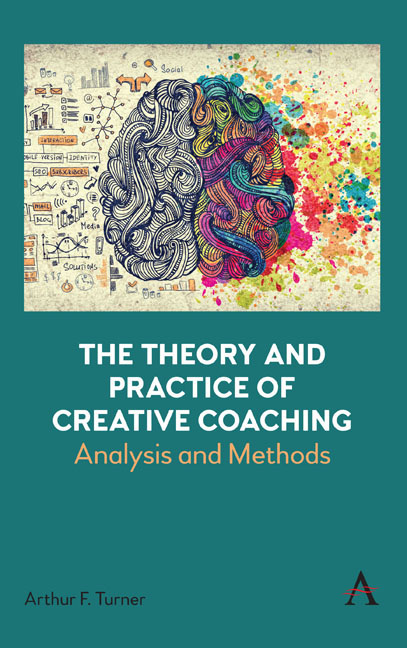Book contents
- Frontmatter
- Contents
- About the Author
- Preface
- Influences
- Introduction
- Section 1 Theory and Research
- Sections 2 and 3 Theory to Practice
- Section 2 Alternative Foci
- Section 3 Three Detailed Examples of Creativity in the Service of Executive Coaching (Walking, the Use of Finger Puppets and the Use of Music)
- Index
2 - Mediating Objects
Published online by Cambridge University Press: 28 February 2024
- Frontmatter
- Contents
- About the Author
- Preface
- Influences
- Introduction
- Section 1 Theory and Research
- Sections 2 and 3 Theory to Practice
- Section 2 Alternative Foci
- Section 3 Three Detailed Examples of Creativity in the Service of Executive Coaching (Walking, the Use of Finger Puppets and the Use of Music)
- Index
Summary
One aspect of creativity in executive coaching is the way in which creative ideas develop, often through trial and error, into a wide range of viable coach–client interactions, which forms the core of this book. Initially I observed this aspect while learning through my doctoral research using the lens of phenomenology (for more details, see Chapter 3), which has since been supplemented through my teaching experience of ILM Levels 5 and 7 between 2015 and 2023. In addition, as I still have ongoing clients for both mentoring and coaching, I have been gaining practical experience with clients who benefit from a flexible and experiential engagement ‘in action’.
As has already been discussed in the preface, I have been influenced strongly by many authors, writers and researchers from a broad range of schools and disciplines. The specificity of my coaching practices, the use of meditating objects of one form or another, has been inspired by four writers and philosophers, and I want to dedicate this chapter to the exploration of the use of mediating objects (sometimes also called mediating artefacts) to set the groundwork for the rest of this book – that is, coaching practices rooted in creativity. The use of objects used for mediating also provides individuals with ‘cognitive hooks’ that help to recall and remember, as opposed to the often-bland blancmange of a more conventional conversation (Nyikos, 1985). Indeed, there are also elements here of Sprevak's work on extending cognition (Sprevak, 2010). The four elements of this theory stand for the ways in which humans extend, embed, embody and enact elements of their environment in the ‘service’ of their cognition.
There have been numerous attempts to understand elements of creativity in humans’ behaviour; however, the following four writers and philosophers have been instrumental in shaping my understanding of the role of creativity in coaching practice:
The Dutch philosopher Johannes Huizinger, writing in the early nineteenth century, highlighted the use of play in human activities, not just in children as a form of learning, but as a latent capacity in adults (Martin, 2016). This latency could be tapped during coaching sessions using creativity.
- Type
- Chapter
- Information
- The Theory and Practice of Creative CoachingAnalysis and Methods, pp. 13 - 22Publisher: Anthem PressPrint publication year: 2023

